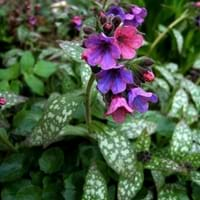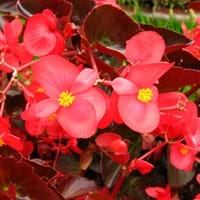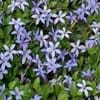Life Span
Perennial
Perennial
Type
Perennial
Tender Perennial
Origin
Southern Europe
Hybrid origin
Types
Bigleaf hydrangea, Hortensia, Smooth hydrangea, Oakleaf hydrangea, Annabelle
'Bellagio Apricot' begonia, 'Bellagio Blush' begonia, 'Bellagio Pink' begonia
Habitat
Forest edges, Hillside, Woods
Subtropical climates, Tropical regions
USDA Hardiness Zone
4-8
9-15
Sunset Zone
1a, 1b, 2a, 2b, 3a, 3b, 4, 5, 6, 7, 8, 9, 14, 15, 16, 17
H1, H2, 14, 15, 16, 17, 18, 19, 20, 21, 22, 23, 24
Habit
Cushion/Mound-forming
Upright/Erect
Flower Color
White, Red, Pink, Violet
Pink, Salmon
Flower Color Modifier
Bicolor
Not Available
Leaf Color in Spring
White, Green, Silver
Red, Green
Leaf Color in Summer
White, Green, Silver
Red, Green, Dark Green, Bronze
Leaf Color in Fall
White, Green, Silver
Red, Dark Green, Bronze
Leaf Color in Winter
Light Green
Green
Leaf Shape
Oblovate
Heart-shaped
Plant Season
Spring, Summer, Fall
Spring, Summer, Fall, Winter
Sunlight
Partial Sun, Partial shade, Full Shade
Partial Sun, Partial shade
Type of Soil
Clay, Loam
Loam, Sand
The pH of Soil
Acidic, Neutral, Alkaline
Acidic, Neutral
Soil Drainage
Average
Well drained
Bloom Time
Early Spring, Spring, Late Winter
Indeterminate
Tolerances
Drought
Not Available
Where to Plant?
Container, Ground
Container, Ground, Pot
How to Plant?
Seedlings, Stem Planting
Seedlings, Transplanting
Plant Maintenance
Medium
Medium
Watering Requirements
Not Available
Over-watering can cause leaf problems or root diseases, Requires regular watering, Water Deeply
In Summer
Average Water
Lots of watering
In Spring
Moderate
Moderate
In Winter
Average Water
Average Water
Soil pH
Acidic, Neutral, Alkaline
Acidic, Neutral
Soil Type
Clay, Loam
Loam, Sand
Soil Drainage Capacity
Average
Well drained
Sun Exposure
Partial Sun, Partial shade, Full Shade
Partial Sun, Partial shade
Pruning
Remove damaged leaves, Remove dead branches, Remove dead leaves
Cut or pinch the stems, No pruning needed in the early stages, Prune if you want to improve plant shape, Prune to control growth, Remove dead or diseased plant parts
Fertilizers
All-Purpose Liquid Fertilizer
All-Purpose Liquid Fertilizer
Pests and Diseases
Red blotch
Aphids, Bacterial leaf spot, Botrytis Blight, Foliar nematode, Powdery mildew, Pythium rot, Rhizoctonia crown rot
Plant Tolerance
Drought
Drought
Flower Petal Number
Single
Single
Foliage Texture
Medium
Medium
Foliage Sheen
Matte
Glossy
Evergreen
Semi-Evergreen
No
Attracts
Hummingbirds
Not Available
Allergy
Chest tightness, Diarrhea, Dizziness, Nausea, Vomiting
Asthma
Aesthetic Uses
Not Available
Beautification
Beauty Benefits
Not Available
Not Available
Edible Uses
Not Available
Yes
Environmental Uses
Air purification
Air purification
Medicinal Uses
Fever, Kidney problems, Urinary tract problems
Bronchitis, Candidiasis, Cold, Digestive disorders, Dysentry, Haemoptysis, Liver problems, Menstrual Disorders, Scrofula, Swelling
Part of Plant Used
Flowers, Root
Whole plant
Other Uses
Not Available
Used as Ornamental plant
Used As Indoor Plant
Not Available
Yes
Used As Outdoor Plant
Yes
Yes
Garden Design
Bedding Plant, Edging, Groundcover, Mixed Border, Wildflower
Container, Edging, Houseplant, Mixed Border, Tropical
Botanical Name
PULMONARIA saccharata
BEGONIA 'Richmondensis'
Common Name
Bethlehem Sage
Begonia, Richmond Begonia
In Hindi
Hydrangea
बिगोनिया
In German
Hortensie
Begonie
In French
Hortensia
Begonia
In Spanish
Hortensia
Begonia
In Greek
υδραγεία
μπιγκόνια
In Portuguese
Hortênsia
Begônia
In Polish
Hortensja
Begonia
In Latin
Hibiscus
Begonia
Phylum
Not Available
Magnoliophyta
Class
Not Available
Magnoliopsida
Order
Not Available
Cucurbitales
Family
Boraginaceae
Begoniaceae
Genus
Not Available
Begonia
Clade
Not Available
Angiosperms, Eudicots, Rosids
Tribe
Not Available
Not Available
Subfamily
Not Available
Not Available
Number of Species
Not Available
Importance of Bethlehem Sage and Begonia
Want to have the most appropriate plant for your garden? You might want to know the importance of Bethlehem Sage and Begonia. Basically, these two plants vary in many aspects. Compare Bethlehem Sage and Begonia as they differ in many characteristics such as their life, care, benefits, facts, etc. Every gardener must at least have the slightest clue about the plants he wants to plant in his garden. Compare their benefits, which differ in many ways like facts and uses. The medicinal use of Bethlehem Sage is Fever, Kidney problems and Urinary tract problems whereas of Begonia is Bronchitis, Candidiasis, Cold, Digestive disorders, Dysentry, Haemoptysis, Liver problems, Menstrual Disorders, Scrofula and Swelling. Bethlehem Sage has beauty benefits as follows: Not Available while Begonia has beauty benefits as follows: Not Available.
Compare Facts of Bethlehem Sage vs Begonia
How to choose the best garden plant for your garden depending upon its facts? Here garden plant comparison will help you to solve this query. Compare the facts of Bethlehem Sage vs Begonia and know which one to choose. As garden plants have benefits and other uses, allergy is also a major drawback of plants for some people. Allergic reactions of Bethlehem Sage are Chest tightness, Diarrhea, Dizziness, Nausea and Vomiting whereas of Begonia have Asthma respectively. Having a fruit bearing plant in your garden can be a plus point of your garden. Bethlehem Sage has no showy fruits and Begonia has no showy fruits. Also Bethlehem Sage is not flowering and Begonia is flowering. You can compare Bethlehem Sage and Begonia facts and facts of other plants too.




